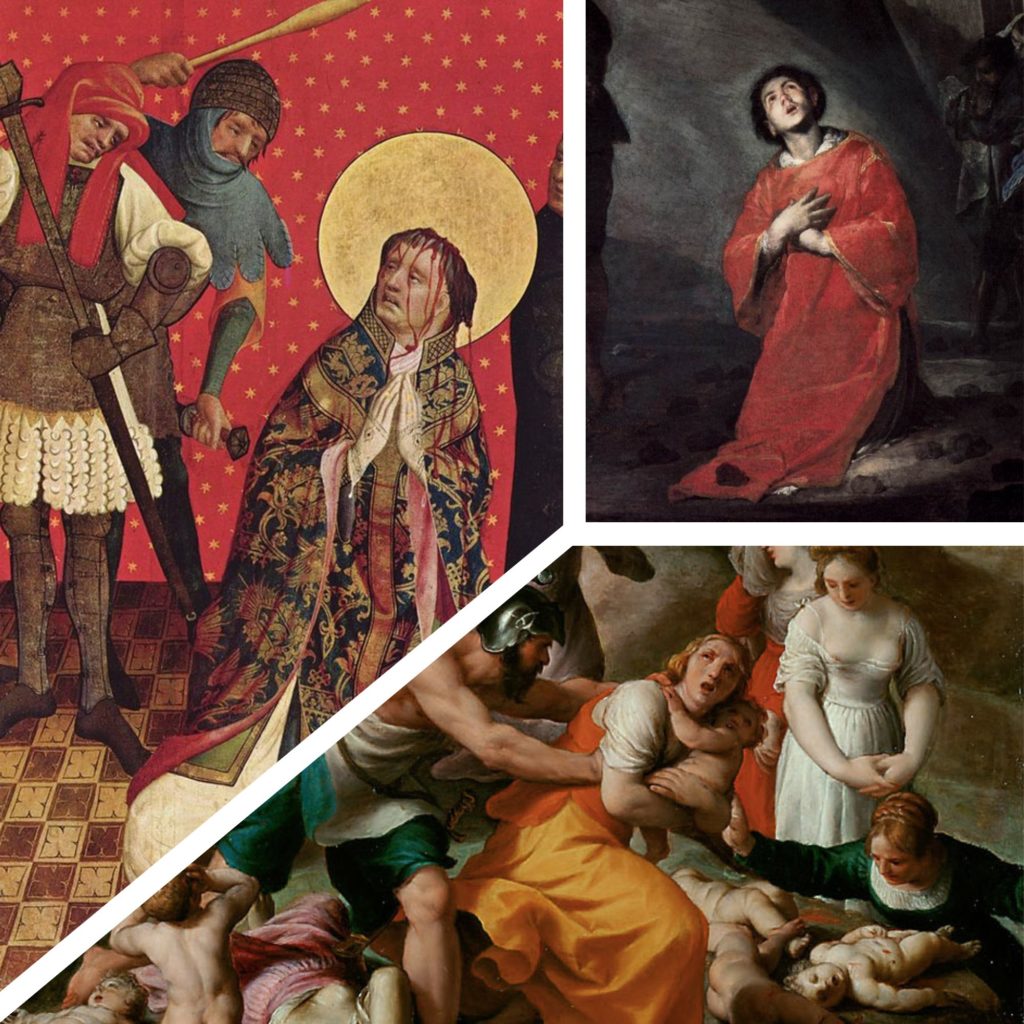Have you ever wondered about those weekday feasts between Christmas and New Year’s Day? They include two martyrs — St. Stephen and St. Thomas à Becket — as well as the Holy Infants, who lost their lives to Herod’s vicious pursuit of Christ. Also the apostle John, who wasn’t even born at the time of Jesus’ Nativity. What is the Church trying to tell us by situating these particular feasts just after the joyful celebration of the Savior’s birth?
I was puzzling over that when I came across something that suggests the answer. It’s verse 9 in chapter 8 of St. Paul’s Second Letter to the Corinthians, and it reads as follows: “For you know the grace of our Lord Jesus Christ, that though he was rich, yet for your sake he became poor, so that by his poverty you might become rich.”
In his inimitable fashion, St. Paul is here summing up the significance of Christ’s incarnation, which we celebrate at Christmas. The Second Person of the Trinity took on human nature and entered into history (“he became poor”) for the precise purpose of redeeming us from sin (“so that … you might become rich”), with the maternity of the Blessed Virgin — she who said yes to the angel — the chosen instrument by which the God-Man began his redemptive mission (as the solemnity of Mary, the Holy Mother of God, reminds us on New Year’s Day).
And those seemingly out of place feasts between Christmas and New Years fit perfectly in this framework.
Like Jesus, Stephen and Becket “became poor” — they gave up their lives and thereby joined the company of those who participate by martyrdom in the redemptive work of Christ. Stephen, the first martyr, whose death is recounted in the Acts of the Apostles, died proclaiming Christ.
Thomas, a 12th-century archbishop of Canterbury, was slain at the king’s behest on Dec. 29, 1170, for upholding the rights of Christ’s Church.
As for the Holy Infants, they died in place of Jesus as a counterpart to the chorus of angels who sang on Christmas night, “Glory to God in the highest, and on earth peace among men with whom he is pleased” (Luke 1.14). St. John the Apostle? The magnificent prologue of his Gospel celebrates the Incarnation (“the Word became flesh and dwelt among us”) while recalling Christ’s passion and its result: “His own people received him not. But to all who received him … he gave power to become children of God” (John 1.11–12).
In their own ways, then, these post-Christmas feasts belong where they are. T.S. Eliot understood that when writing his verse drama “Murder in the Cathedral,” based (loosely) on the martyrdom of Becket. In a Christmas sermon, Becket notes that Christmas is followed immediately by the feast of the first martyr, Stephen. An accident? “By no means,” the soon-to-be martyred archbishop declares, adding:
“Just as we rejoice and mourn at once, in the Birth and in the Passion of Our Lord, so also, in a smaller figure, we both rejoice and mourn in the death of martyrs. … A martyr, a saint, is always made by the design of God, for His love of men, to warn them and to lead them, to bring them back to His ways. … The true martyr is he who has become the instrument of God, who has lost his will in the will of God.”
Merry Christmas and happy New Year — and note those martyrs’ feasts that the Church wisely situates in between.

